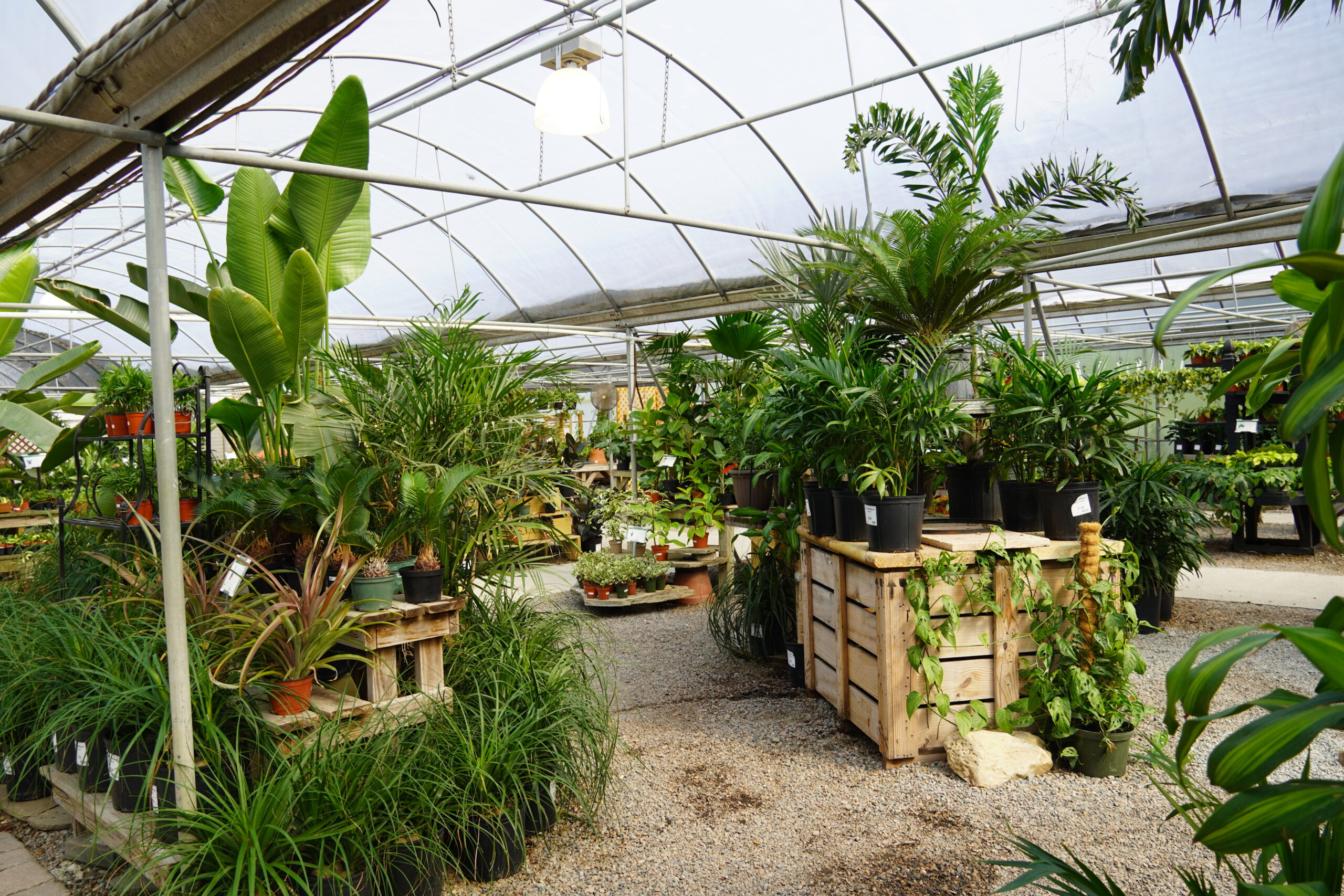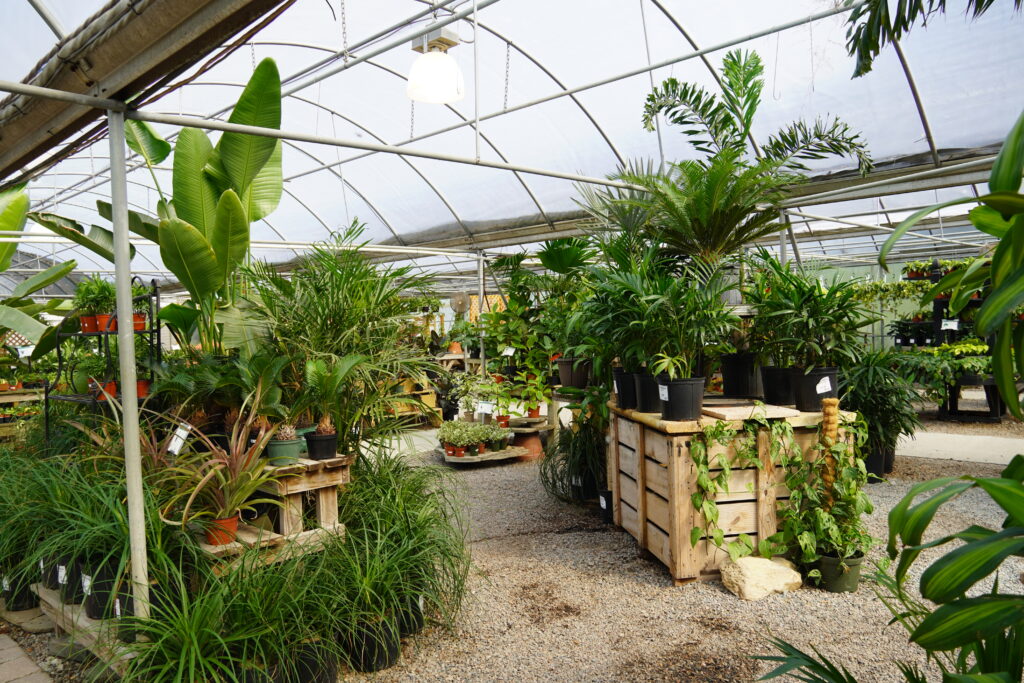
Winter Time: Houseplant Care
When outdoor temperatures cool and the leaves start to change color, it’s clear that the garden is about to undergo major changes. But as conditions change outside, they also affect your indoor garden: houseplants. Fewer hours of sunlight coupled with dry air can pose a challenge to indoor plant lovers trying to keep their collections alive over the winter months. As the weather begins to change, take a few simple steps to prepare your houseplants to thrive through the off season.

1. Bring your Plants Inside
During the bright summer months, keeping houseplants outdoors is a great way to encourage rapid growth. Increased sunlight is a huge benefit to many indoor plants – especially epiphytes like philodendrons, hoyas, and succulent plants. When temperatures dip near 60 degrees, it’s best to bring those plants indoors for the winter to avoid cold damage to the foliage. Because they’re tropical plants, most aren’t equipped to spend the winter outdoors. Ambitious gardeners can also overwinter some warm season annuals by bringing them inside. Geraniums, coleus, and begonias are just a few annual plants that easily overwinter given the right care.
2. Clean up
Now that all your plants are indoors, spend time cleaning them up. Thoroughly inspect any plant that has been outdoors for common garden pests and signs of disease. Treat with neem oil, fungicide, or insecticide if necessary. Next, remove dead foliage and debris from the pot. This step not only immediately improves the appearance of your plants, but it also helps the plant efficiently send energy and nutrients to the healthy foliage.
Houseplant foliage collects dust in your home just like furniture. Leaves should be cleaned of dirt and dust every few months, but especially in the fall before the light conditions change. Dust on leaves impedes photosynthesis. With fewer hours of sunlight, it’s crucial that your plants have the opportunity to absorb as much as possible.
The most simple method to clean dust off of houseplants is to use a spray bottle or gentle spray nozzle to rinse off the leaves during regular watering. For plants sensitive to water like African violets and plants too large to hold under the sink, use a damp microfiber cloth to wipe down each leaf. It may be time consuming, but keeping foliage clean is an easy way to keep plants healthy.
This is also a great time to take cuttings for winter propagation! Excess growth from the spring and summer can be snipped off with clean shears and propagated in water, moss, or soil depending on the type of plant.
3. Consider Changing Environmental Factors
Just like we notice the sun setting earlier in the fall, plants notice too. Less sunlight results in less plant productivity. To boost the sun’s impact, move houseplants closer to windows if you can. Plants that spend the summer in north and east facing windows will get increased sunlight in southern facing windows. In particularly overcast and wet climates, an artificial grow light may be the best option for keeping houseplants healthy over the winter.
Cool, dry air in the home contributes to lower humidity compared to that of the summer months. While some plants can handle dry air, many tropicals prefer humidity levels between 50 and 70 percent. Simple tricks like grouping your houseplants together and using a pebble tray filled with water are easy ways to raise local humidity around your plants. For an abundance of plants and particularly tropical specimens, a humidifier is the best choice to keep your plants hydrated.
Consider other factors of your space. Avoid placing houseplants too close to drafty windows where incoming cold air can damage the leaves. Some plants may have to be moved away from hot air vents or exterior doors.
4. Adjust your Care Routine
Now that your plants have found their new winter homes, they’re ready for a new winter care regimen. Plants receiving less sunlight require less watering. We recommend observing the moisture in your soil and monitoring each plant for signs of dehydration. Over time, you’ll learn the right frequency to water each plant.
Most indoor plants are not in a state of active growth during the winter months. Stop applying fertilizer through the fall and winter as it may burn the foliage. In spring when each plant begins to push out new growth, pick back up with a steady routine of fertilizer application.
It’s best to avoid repotting houseplants during the cool months. Moving a plant from one pot to another may stress the plant and cause leaf shedding. Unless a plant is completely pot bound or fails to efficiently take up water, wait until the spring to repot.
Every houseplant can survive through the winter months with the right care. Follow our simple steps and stay alert for changes in your plants to keep your indoor jungle alive and well until growing season begins again!

When/how far should I cut back zebra grass in outdoor containers?
Hi Kevin- You should cut back your zebra grass in the early spring down to the main clump at the base, usually only leaving leaves about 12-20″ long.